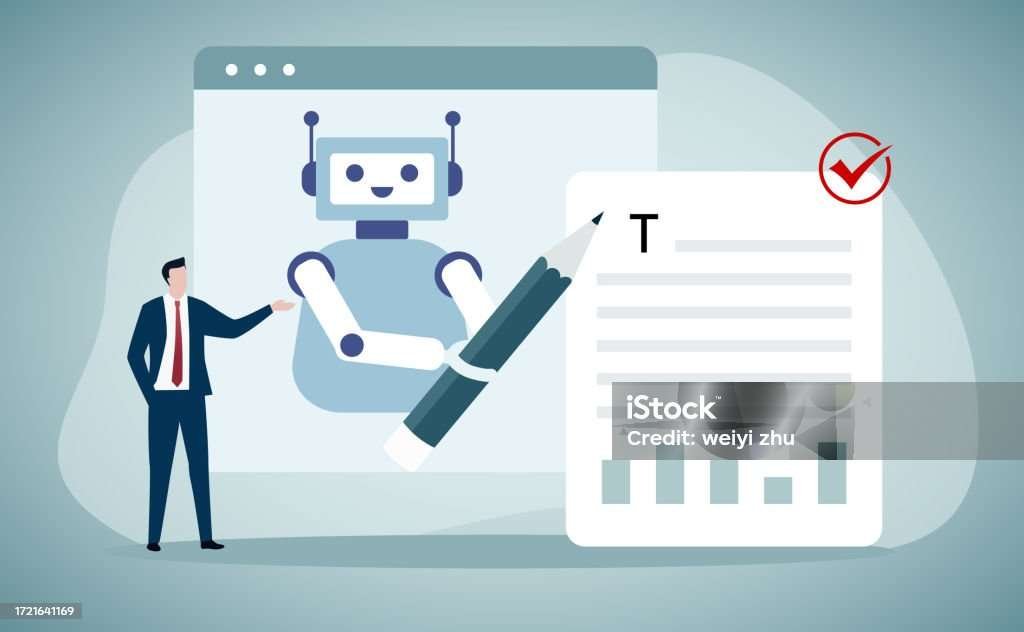50 Game-Changing ChatGPT Prompts Every Entrepreneur Needs in 2025
As an entrepreneur, your most valuable resource isn’t money—it’s time. Every minute spent on routine tasks is a minute stolen from strategy, innovation, and growth. ChatGPT has emerged as the ultimate entrepreneurial assistant, capable of handling everything from market research to content creation, but only if you know how to communicate with it effectively.
The difference between entrepreneurs who leverage ChatGPT successfully and those who struggle lies in one critical skill: prompt engineering. The right prompts can transform ChatGPT from a basic chatbot into a sophisticated business consultant, marketing expert, and strategic advisor rolled into one.
After analyzing thousands of successful entrepreneurial use cases, we’ve compiled the 50 most powerful ChatGPT prompts that can revolutionize how you run your business. These aren’t generic prompts—they’re battle-tested formulas used by successful entrepreneurs to save hours daily while improving their business outcomes.
Business Strategy and Planning
1. Market Analysis Deep Dive “Act as a market research expert. Analyze the [INDUSTRY] market for [TARGET AUDIENCE]. Provide insights on market size, growth trends, key players, opportunities, and potential threats. Include specific data points and actionable recommendations for a new entrant.”
2. Competitive Intelligence “You’re a competitive intelligence analyst. Compare [YOUR COMPANY] with [COMPETITOR 1], [COMPETITOR 2], and [COMPETITOR 3]. Create a detailed SWOT analysis highlighting competitive advantages, weaknesses, and market positioning opportunities.”
3. Business Model Innovation “As a business model strategist, help me explore alternative revenue models for [BUSINESS DESCRIPTION]. Consider subscription, freemium, marketplace, licensing, and hybrid models. Provide pros, cons, and implementation strategies for each.”
4. Risk Assessment Framework “Act as a risk management consultant. Identify potential risks for [BUSINESS TYPE] in [INDUSTRY]. Categorize risks by probability and impact, then suggest specific mitigation strategies for the top 5 highest-priority risks.”
5. Pivot Strategy Development “You’re a turnaround specialist. My business [CURRENT SITUATION] is facing [SPECIFIC CHALLENGES]. Suggest 3 potential pivot strategies with detailed implementation plans, resource requirements, and success metrics.”
Marketing and Customer Acquisition
6. Target Audience Persona Creation “Create detailed buyer personas for [PRODUCT/SERVICE]. Include demographics, psychographics, pain points, buying behavior, preferred communication channels, and objections. Make each persona feel like a real person with specific motivations and goals.”
7. Content Marketing Strategy “As a content marketing expert, develop a 90-day content strategy for [BUSINESS TYPE] targeting [AUDIENCE]. Include content pillars, distribution channels, posting frequency, and specific content ideas that will drive engagement and conversions.”
8. Social Media Campaign Design “Design a viral social media campaign for [PRODUCT LAUNCH]. Include platform-specific content ideas, hashtag strategies, influencer collaboration approaches, and metrics to track success. Focus on [TARGET DEMOGRAPHIC].”
9. Email Marketing Sequences “Create a 7-email nurture sequence for [CUSTOMER SEGMENT] who [SPECIFIC BEHAVIOR]. Include subject lines, email content structure, CTAs, and timing. Each email should provide value while moving prospects closer to conversion.”
10. Sales Funnel Optimization “Analyze this sales funnel: [DESCRIBE CURRENT FUNNEL]. Identify bottlenecks, suggest improvements for each stage, and recommend specific tactics to increase conversion rates by at least 25%.”
Product Development and Innovation
11. Feature Prioritization Matrix “Help me prioritize these product features: [LIST FEATURES]. Use the RICE framework (Reach, Impact, Confidence, Effort) to score each feature and provide a ranked priority list with justifications.”
12. User Experience Audit “Conduct a UX audit for [PRODUCT/WEBSITE]. Identify usability issues, suggest improvements for user flow, and recommend specific changes that would enhance customer satisfaction and conversion rates.”
13. Innovation Brainstorming “Act as an innovation consultant. Generate 20 creative solutions to this problem: [DESCRIBE PROBLEM]. Think outside conventional approaches and include both incremental improvements and breakthrough innovations.”
14. Product-Market Fit Assessment “Evaluate product-market fit for [PRODUCT] in [MARKET]. Analyze customer feedback patterns, usage metrics, and market signals. Provide a PMF score and specific recommendations to strengthen market alignment.”
15. Minimum Viable Product Planning “Design an MVP for [PRODUCT IDEA] targeting [CUSTOMER SEGMENT]. Define core features, development timeline, budget requirements, and success metrics. Focus on maximum learning with minimum resources.”
Financial Management and Fundraising
16. Financial Projection Modeling “Create 3-year financial projections for [BUSINESS TYPE]. Include revenue streams, operating expenses, cash flow analysis, and break-even calculations. Provide optimistic, realistic, and conservative scenarios.”
17. Fundraising Strategy Development “Develop a fundraising strategy for [BUSINESS STAGE] seeking [FUNDING AMOUNT]. Include investor types to target, pitch deck outline, valuation justification, and timeline with key milestones.”
18. Cost Optimization Analysis “Analyze these business expenses: [LIST EXPENSES]. Identify cost reduction opportunities, suggest alternatives, and prioritize cuts that minimize impact on growth and customer experience.”
19. Pricing Strategy Framework “Design a pricing strategy for [PRODUCT/SERVICE]. Consider value-based, competitive, and cost-plus pricing models. Include psychological pricing tactics and recommendations for different customer segments.”
20. Cash Flow Management “Create a cash flow management plan for [BUSINESS TYPE] with [CURRENT SITUATION]. Include strategies for improving collections, managing payables, and maintaining healthy cash reserves during seasonal fluctuations.”
Operations and Team Management
21. Process Optimization “Map out the current process for [SPECIFIC OPERATION]. Identify inefficiencies, bottlenecks, and automation opportunities. Suggest a streamlined process that reduces time by 30% while maintaining quality.”
22. Team Structure Design “Design an optimal team structure for [COMPANY SIZE] in [INDUSTRY]. Include roles, responsibilities, reporting relationships, and hiring priorities. Consider both current needs and 12-month growth projections.”
23. Performance Management System “Create a performance management framework for [TEAM SIZE] team. Include KPIs for each role, review processes, goal-setting methodologies, and strategies for improving underperformance.”
24. Remote Work Optimization “Develop a remote work strategy for [TEAM DESCRIPTION]. Include communication protocols, productivity tools, collaboration methods, and culture-building activities that maintain team cohesion and efficiency.”
25. Vendor Evaluation Matrix “Create a vendor evaluation framework for [SERVICE TYPE]. Include weighted criteria, scoring methodology, and decision matrix template. Help me objectively compare [VENDOR OPTIONS] based on cost, quality, and strategic fit.”
Customer Success and Retention
26. Customer Journey Mapping “Map the complete customer journey for [BUSINESS TYPE] from awareness to advocacy. Identify touchpoints, pain points, and opportunities to improve experience at each stage.”
27. Churn Analysis Framework “Analyze customer churn patterns for [BUSINESS MODEL]. Identify leading indicators of churn, segment at-risk customers, and develop specific retention strategies for each segment.”
28. Customer Success Program “Design a customer success program for [PRODUCT/SERVICE]. Include onboarding sequences, milestone celebrations, proactive support strategies, and expansion opportunity identification.”
29. Feedback Collection System “Create a comprehensive customer feedback system including survey designs, interview guides, and feedback analysis methods. Focus on actionable insights that drive product and service improvements.”
30. Loyalty Program Design “Develop a customer loyalty program for [BUSINESS TYPE]. Include reward structures, engagement tactics, tier systems, and metrics to measure program effectiveness and ROI.”
Crisis Management and Problem Solving
31. Crisis Communication Plan “Develop a crisis communication strategy for [POTENTIAL CRISIS SCENARIO]. Include stakeholder messaging, communication channels, timeline, and key spokesperson guidelines.”
32. Problem-Solving Framework “Apply the 5 Whys technique to this problem: [DESCRIBE PROBLEM]. Dig deep to identify root causes and develop comprehensive solutions that prevent recurrence.”
33. Damage Control Strategy “Create a damage control plan for [NEGATIVE SITUATION]. Include immediate actions, stakeholder communication, reputation recovery tactics, and long-term relationship rebuilding strategies.”
Advanced Business Intelligence
34. Data Analysis Interpretation “Analyze this business data: [PROVIDE DATA]. Identify trends, patterns, and anomalies. Provide actionable insights and specific recommendations based on the findings.”
35. Market Trend Prediction “Based on current market signals in [INDUSTRY], predict likely trends for the next 12-18 months. Include implications for [BUSINESS TYPE] and strategic recommendations to capitalize on these trends.”
Quick-Win Tactical Prompts
36. Meeting Agenda Optimization “Create an efficient meeting agenda for [MEETING PURPOSE] with [PARTICIPANTS]. Include time allocations, discussion topics, decision points, and action item tracking.”
37. Email Response Templates “Write professional email templates for these scenarios: [LIST SCENARIOS]. Include appropriate tone, key messaging, and call-to-action for each situation.”
38. Negotiation Strategy “Develop a negotiation strategy for [NEGOTIATION CONTEXT]. Include preparation steps, key arguments, concession strategies, and win-win outcomes to pursue.”
39. Partnership Proposal “Draft a partnership proposal for [POTENTIAL PARTNER]. Include mutual benefits, collaboration framework, success metrics, and next steps for moving forward.”
40. Industry Report Summary “Summarize key insights from this industry report: [REPORT DETAILS]. Extract actionable intelligence relevant to [YOUR BUSINESS] and suggest strategic implications.”
Productivity and Personal Development
41. Time Audit Analysis “Analyze my current time allocation: [DESCRIBE DAILY SCHEDULE]. Identify time wasters, suggest productivity improvements, and create an optimized schedule that maximizes high-impact activities.”
42. Skill Development Plan “Create a skill development plan for [ROLE/GOALS]. Identify critical skills gaps, recommend learning resources, and establish a timeline with measurable milestones.”
43. Decision-Making Framework “Help me make this difficult decision: [DESCRIBE DECISION]. Use a structured decision-making framework considering pros, cons, risks, opportunities, and long-term implications.”
44. Goal Setting and Tracking “Transform these business objectives into SMART goals: [LIST OBJECTIVES]. Include specific metrics, deadlines, and accountability measures.”
45. Stress Management Strategy “Develop a stress management plan for entrepreneurs dealing with [SPECIFIC STRESSORS]. Include practical techniques, mindset shifts, and systemic changes to reduce stress.”
Innovation and Future Planning
46. Technology Adoption Strategy “Evaluate [NEW TECHNOLOGY] for potential adoption in [BUSINESS CONTEXT]. Include benefits, risks, implementation requirements, ROI projections, and competitive implications.”
47. Scenario Planning “Create three future scenarios for [INDUSTRY/BUSINESS] considering [MAJOR VARIABLES]. Develop strategic responses and contingency plans for each scenario.”
48. Blue Ocean Strategy “Identify blue ocean opportunities in [INDUSTRY]. Analyze what factors to eliminate, reduce, raise, and create to discover uncontested market space.”
49. Disruptive Innovation Assessment “Assess potential disruption threats to [BUSINESS MODEL]. Identify emerging technologies, business models, or market shifts that could impact our industry.”
50. Legacy Planning “Develop a business legacy plan focusing on [VISION/VALUES]. Include succession planning, knowledge transfer, and strategies for ensuring long-term impact beyond current leadership.”
Maximizing Your ChatGPT Entrepreneurial Assistant
To get the most from these prompts, remember these key principles:
Be Specific: Replace bracketed placeholders with detailed, specific information about your business situation.
Provide Context: The more relevant context you provide, the more tailored and useful ChatGPT’s responses will be.
Iterate and Refine: Use follow-up prompts to drill deeper into specific aspects of the initial response.
Combine Prompts: Use multiple prompts in sequence to build comprehensive strategies and solutions.
Customize for Your Industry: Adapt these prompts to include industry-specific terminology and considerations.
These 50 ChatGPT prompts represent hundreds of hours of entrepreneurial expertise distilled into actionable templates. Use them consistently, and you’ll find yourself making faster decisions, developing better strategies, and spending more time on what truly matters—growing your business and serving your customers.
The entrepreneurial journey is challenging enough without doing everything manually. Let ChatGPT be your intelligent business partner, and watch your productivity soar while your stress levels plummet.




